- Home
- Ramachandra Guha
India After Gandhi Page 13
India After Gandhi Read online
Page 13
5
* * *
REFUGEES AND THE REPUBLIC
Refugees are [being] sent all over India. They will scatter communal hatred on a wide scale and will churn up enormous ill-will everywhere. Refugees have to be looked after, but we have to take steps to prevent the infection of hatred beyond the necessary minimum which cannot be prevented.
C. RAJAGOPALACHARI, governor of Bengal, 4 September 1947
May the blood that flowed from Gandhiji’s wounds and the tears that flowed from the eyes of the women of India everywhere they learnt of his death serve to lay the curse of 1947, and may the grisly tragedy of that year sleep in history and not colour present passions.
C. RAJAGOPALACHARI, 20 March 1948
I
IN THE INDIAN IMAGINATION Kurukshetra occupies a special place. It was the venue for the bloody battles described in the epic Mahabharata. According to the epic, the fighting took place on an open plain northwest of the ancient city of Indraprastha (now known as Delhi). The plain was called Kurukshetra, a name it retains to this day.
Several thousand years after the Mahabharata was composed, the place of its enactment became the temporary home of the victims of another war.This, too, was fought between closely related kin: India and Pakistan, rather than Pandava and Kaurava. Many of the Hindus and Sikhs fleeing West Punjab were directed by the government of India to a refugee camp in Kurukshetra. A vast city of tents had grown up on the plain, to house waves of migrants, sometimes up to 20,000 a day. The camp was initially planned for 100,000 refugees, but it came to accommodate three times that number. As an American observer wrote, ‘the army worked miracles to keep the tents rising ahead of the last refugees’. The new inhabitants of Kurukshetra consumed 100 tons of flour daily, along with large quantities of salt, rice, lentils, sugar and cooking oil – all provided free of charge by the government. Helping the state in their effort was a network of Indian and foreign social workers, the United Council for Relief and Welfare (UCRW).
The refugees had to be housed and fed, but also clothed and entertained. With winter approaching, the ‘Government soon recognized that the evenings and nights were hardest to bear’. So the UCRW commandeered a bunch of film projectors from Delhi, and set them up in Kurukshetra. Among the movies shown were Disney specials featuring Mickey Mouse and Donald Duck. With large cloth screens allowing for two-way projection, crowds of up to 15,000 could watch a single show. This ‘two-hour break from reality’, commented asocial worker, ‘was a lifesaver. The refugees forgot their shock experiences and misery for two golden hours of laughter. Yes, they who had been bruised and beaten, were homeless and wounded, could laugh. Here was hope.’1
Kurukshetra was the largest of the nearly 200 camps set up to house refugees from West Punjab. Some refugees had arrived before the date of transfer of power; among them prescient businessmen who had sold their properties in advance and migrated with the proceeds. However, the vast majority came after15 August 1947, and with little more than the clothes on their skin. These were the farmers who had ‘stayed behind till the last moment, firmly resolved to remain in Pakistan if they could be assured of an honourable living’. But when, in September and October, the violence escalated in the Punjab, they had to abandon that idea. The Hindus and Sikhs who were lucky enough to escape the mobs fled to India by road, rail, sea and on foot.2
Camps such as Kurukshetra were but a holding operation. The refugees had to be found permanent homes and productive work. A journalist visiting Kurukshetra in December 1947 described it as a city in itself, with 300,000 people, all ‘sitting idle like mad’. ‘The one thought that dominates the peasant-refugees of Kurukshetra’, he wrote,is ‘“Give us some land. We will cultivate it”. That is what they shouted. These land-hungry peasants told us that they did not very much care where land was given to them provided [it] was cultivable. Their passion for land appeared to be elemental.3
As it happened, a massive migration had also taken place the other way, into Pakistan from India. Thus, the first place to resettle the refugees was on land vacated by Muslims in the eastern part of the Punjab. If the transfer of populations had been ‘the greatest mass migration’ in history, now commenced ‘the biggest land resettlement operation in the world’. As against 2.7 million hectares abandoned by Hindus and Sikhs in West Punjab, there were only 1.9 million hectares left behind by Muslims in East Punjab. The shortfall was made more acute by the fact that the areas in the west of the province had richer soils, and were more abundantly irrigated. Indeed, back in the late nineteenth century, hundreds of Sikh villages had migrated en masse to the west to cultivate land in the newly created ‘canal colonies’. There they had made the desert flourish, but one fine day in 1947 they were told that their garden now lay in Pakistan. So, in a bare two generations, these dispossessed Sikhs found themselves back in their original homes.
To begin with, each family of refugee farmers was given an allotment of four hectares, regardless of its holding in Pakistan. Loans were advanced to buy seed and equipment. While cultivation commenced on these temporary plots, applications were invited for permanent allotments. Each family was asked to submit evidence of how much land it had left behind. Applications were received from 10 March 1948; within a month, more than half a million claims had been filed. These claims were then verified in open assemblies consisting of other migrants from the same village. As each claim was read out by a government official, the assembly approved, amended, or rejected it.
Expectedly, many refugees were at first prone to exaggeration. However, every false claim was punished, sometimes by a reduction in the land allotted, in extreme cases by a brief spell of imprisonment. This acted as a deterrent; still, an officer closely associated with the process estimated that there was an overall inflation of about 25 per cent. To collect, collate, verify and act upon the claims a Rehabilitation Secretariat was set up in Jullundur. At its peak there were about 7,000 officials working here; they came to constitute a kind of refugee city of their own. The bulk of these officials were accommodated in tents, the camp serviced by makeshift lights and latrines and with temporary shrines, temples for Hindus and gurdwaras for Sikhs.
Leading the operations was the director general of rehabilitation, Sardar Tarlok Singh of the Indian Civil Service. A graduate of the London School of Economics, Tarlok Singh used his academic training to good effect, making two innovations that proved critical in the successful settlement of the refugees. These were the ideas of the ‘standard acre’ and the ‘graded cut’. A ‘standard acre’ was defined as that amount of land which could yield ten to eleven maunds of rice. (A maund is about 40 kilograms.) In the dry, unirrigated districts of the east, four physical acres comprised one ‘standard’ acre, whereas in the lush canal colonies, a real acre of land more or less equalled its standard counterpart.
The concept of the standard acre innovatively took care of the variations in soil and climate across the province.Theidea of the ‘graded cut’, meanwhile, helped overcome the massive discrepancy between the land left behind by the refugees and the land now available to them – a gap that was close to a million acres. For the first ten acres of any claim, a cut of 25 percent was implemented – thus one got only 7.5 acres instead of ten. For higher claims the cuts were steeper: 30 per cent for 10–30 acres, and on upwards, till those having in excess of 500 acres were ‘taxed at the rate of 95 per cent. The biggest single loser was a lady named Vidyawati, who had inherited (and lost) her husband’s estate of 11,500 acres, spread across thirty-five villages of the Gujranwala and Sialkot districts. In compensation, she was allotted a mere 835 acres in a single village of Karnal.
By November 1949 Tarlok Singh and his men had made 250,000 allotments of land. These refugees were then distributed equitably across the districts of East Punjab. Neighbours and families were resettled together, although the re-creation of entire village communities proved impossible. Refugees were invited to protest against their allotments; close to 100,000 families asked for a
review. A third of these objections were acted upon; as a result, 80,000 hectares changed hands once again.
In exchange for their well-watered lands in the west, these refugees were given impoverished holdings in the east. With the implementation of graded cuts, they had less of it as well. But with characteristic ingenuity and enterprise they set to work, digging new wells, building new houses, planting their crops. By 1950 a depopulated countryside was alive once again.4
Yet a sense of loss persisted. The economy could be rebuilt,but the cultural wrongs of Partition could never be undone – not in, or by, either side. The Sikhs once more had land to cultivate, but they would never get back much-loved places of worship. These included the gurdwara in Lahore where lay buried their great warrior-chieftain, Ranjit Singh, as well as Nankana Sahib, the birthplace of the founder of the faith, Guru Nanak.
In April 1948 the editor of the Calcutta Statesman visited Nankana Sahib, where he met the handful of Sikhs permitted by Pakistan to stay on as guardians of the shrine. A few months later the journalist visited the centre of the Ahmadiya sect of Islam, the town of Qadian, which lay in the Indian Punjab. The great tower of the Ahmadiya mosque was visible from miles around, but with in its precincts there now lived only 300 of the faithful. Otherwise, the town had been taken over by 12,000 Hindu and Sikh refugees. In both Qadian and Nankana Sahib there was ‘the conspicuous dearth of daily worshippers, the aching emptiness, the sense of waiting, of hope and . . . of faith fortified by humbling affliction’.5
II
The bulk of the migrants from West Punjab were farmers; but there were also many who were artisans, traders and labourers. To accommodate them the government built brand-new townships. One, Farida-bad, lay twenty miles south of the nation’s capital, Delhi. Among the groups active here was the Indian Cooperative Union (ICU), an organization headed by Kamaladevi Chattopadhyaya, a socialist and feminist who had been closely associated with Mahatma Gandhi.
The residents of Faridabad were mostly Hindu refugees from the North-West Frontier Province. A social worker named Sudhir Ghosh encouraged them to construct their own homes. However, the government wished to build the houses through its Public Works Department (PWD), notorious for its sloth and corruption, widely known both as the ‘Public Waste Department’ and as ‘Plunder Without Danger’. In protest a group of refugees besieged the prime minister’s house in Delhi. They were a ‘nuisance’ to Nehru, who encountered them as he went to work every morning, but at least they made him ‘think furiously of the problems’ facing the refugees. In atypically Indian compromise, the refugees were allowed to build about 40 per cent of the houses, with the PWD constructing the rest.
In Faridabad, the ICU organized co-operatives and self-help groups, setting up shops and small production units. To power these, and to light up the homes, a diesel plant was erected at short notice. This plant lay in ashed in Calcutta, where it had come as part of German war reparations. No one wanted it in that city, so it was sent to Faridabad instead. Sudhir Ghosh located the German engineer who had built the plant in Hamburg, and persuaded him to come to India. The engineer came, but to his dismay no cranes were available to erect it. So he trained the Faridabad men to operate 15-tonne jack screws, which helped raise the equipment inch-by-inch. In ten months the plant was ready. In April 1951 Nehru himself came to commission it, and as he ‘pressed the button, the lights came on and lifted the spirits of all in Faridabad. The township had power in its hands to fashion its industrial future.’6
Meanwhile, thousands of refugees had made their homes in Delhi itself. Till 1911 that city had been Muslim in character and culture. In that year, the British shifted their capital there from Calcutta. After 1947 New Delhi became the seat of the government of free India. Urdu-speaking Muslims went away to Pakistan, many unwillingly, while Punjabi-speaking Hindus and Sikhs arrived in their place. They set up house, and shop, wherever they could. In the middle of the city lay Connaught Circus, a majestic shopping arcade designed by R. T. Russell. Had Russell ever seen what became of his creation, he would perhaps have been ‘spinning in his grave like a dervish’. In 1948 and 1949, ‘stalls and push-carts of every size and shape’ had been set up along the pavements. Thus, ‘what was once a shaded walk where the stopper could stroll at leisure, inspecting the goods on offer and not meeting an insistent salesman, unless he or she went into a store, has become pandemonium . . . All in all, the exclusive shopping district of New Delhi, which in pre-independence days catered to the elite and wealthy, is now just a glorified bazaar.’7
Almost half amillion refugees came to settle in Delhi after Partition. They flooded the city, ‘spreading themselves out wherever they could. They thronged in camps, schools, colleges, temples, gurdwaras, dharamshalas, military barracks, and gardens. They squatted on railway platforms, streets, pavements, and every conceivable space.’ In time, these squatters built houses on land allotted to them to the west and south of Lutyens’s Delhi.Here rose colonies that to this day are dominated by Punjabis: nagars or townships named after Patel, Rajendra (Prasad) and Lajpat (Rai), Hindu Congress leaders they particularly admired.
Like their counterparts settled on the farms of East Punjab, the refugees in Delhi displayed much thrift and drive. In time they came to gain ‘a commanding influence in Delhi’, dominating its trade and commerce. Indeed, a city that was once a Mughal city, then a British city, had by the 1950s emphatically become a Punjabi city.8
III
Like Delhi, the city of Bombay also had its culture and social geography transformed by Partition. By July 1948 there were half a million refugees in the city, these arriving from Sindh, Punjab and the Frontier. The refugees further intensified what was already the most acute of Bombay’s problems: the housing shortage. Almost a million people were now sleeping on the pavements. Slums were growing apace. In crowded tenements, people lived fifteen or twenty to a room.9
One journalist claimed that the total losses of Sindh refugees were Rs4,000–5,000 million, since back home they had owned large amounts of land, dominated the public services and controlled business and trade. Whereas the Punjabi refugees now had East Punjab as their own, to fulfil there ‘the essentials of an independent corporate existence and the attributes of an autonomous Government’, the Sindh is had nothing similar on which to rebuild.10 Some looked beseechingly or angrily to the state; others took matters into their own hands. Thus, in Bombay, it was ‘a sight to see even little Sindhi boys hawking pieces of cloth in the thoroughfares of the city. They have got salesmanship in their blood. That is why the Gujaratis and Maharashtrians have not taken kindly to the Sindhi invader. Even little urchins from the backwoods of Sind are able to make a living by selling trinkets in suburban trains.11
There were five refugee camps in Bombay. Their condition left much to be desired. The Kolwada camp had 10,400 people living in barracks. The average space allotted to each family was thirty-six square feet. There were only twelve water taps in the entire camp, no doctors, only one school and no electricity. The place was run in dictatorial fashion by a man named Pratap Singh. In April 1950 a minor riot broke out when some tenants refused to pay rent, protesting their living conditions. Pratap Singh had them served with an eviction order, and when they resisted, called in the police. In the ensuing affray a young man was killed. The journalist reporting the story appropriately called the residents of the camp ‘inmates’; as he noted, ‘other inmates [were] huge cat-sized ugly rats, bugs, mosquitoes, and snakes’.12
The refugees from Sindh spread themselves across the towns and cities of western India. Apart from Bombay, there were substantial communities in Pune and Ahmedabad. A social psychologist visiting them in the autumn of 1950 found the Sindh is deeply dissatisfied. The ‘complaints of crowded, filthy quarters, inadequate water, insufficient rations, and above all, insufficient support from the government, are almost universal’. A refugee in Ahmedabad said that ‘we are eating stuff which we used to throw away in Pakistan for the birds to eat’. Others com
plained of ill treatment by the local Gujaratis, and were particularly hostile towards the Muslims. And they fulminated against the Indian state, although they exonerated Nehru himself. ‘Our government is useless,’ they said. ‘All are thieves collected together. Only Pandit [Nehru] is all right; the rest are all worthless and self-serving. The Pandit himself says what he can do; the rest of the machinery does not work.’13
IV
The influx of refugees also transformed the landscape of India’s third great metropolis, Calcutta. Before Partition, the more prosperous Hindu families of eastern Bengal had begun moving with their assets to the city. After Partition the immigration was chiefly of working-class and farming families. Unlike in the Punjab, where the exodus happened in one big rush, in Bengal it was spread out. However, in the winter of 1949–50 there was a wave of communal riots in East Pakistan which forced many more Hindus across the border. In previous years about 400,000 refugees came into West Bengal; in 1950 the number jumped to 1.7 million.
Where did these people seek refuge? Those who could, stayed with relatives. Others made a home on the city’s railway stations, where their beds, boxes and other accessories lay spread out on the platform. Here ‘families lived, slept, mated, defecated and ate on the concrete amidst flies, lice, infants and diarrhoea. Victims of cholera would lie exhausted staring at their vomit, women were kept busy delousing each other, beggars begged.’ Still others lived on the street, ‘with the stray cattle, like the stray cattle, drinking gutter-water, eating garbage, sleeping on the curb . . .’14

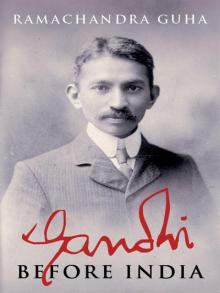 Gandhi Before India
Gandhi Before India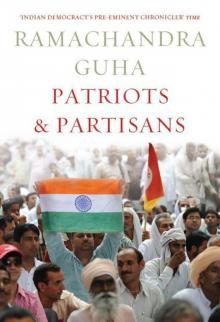 Patriots & Partisans
Patriots & Partisans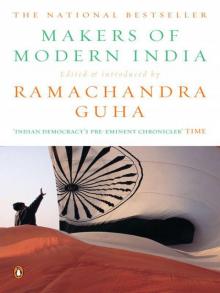 Makers of Modern India
Makers of Modern India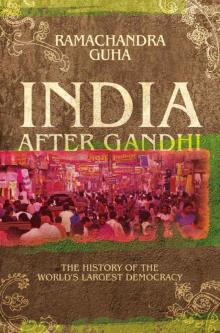 India After Gandhi: The History of the World's Largest Democracy
India After Gandhi: The History of the World's Largest Democracy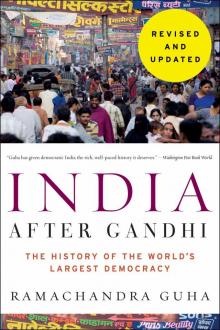 India After Gandhi Revised and Updated Edition
India After Gandhi Revised and Updated Edition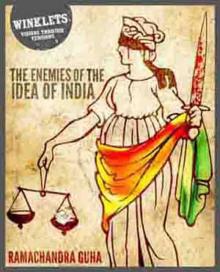 The Enemies of the Idea of India
The Enemies of the Idea of India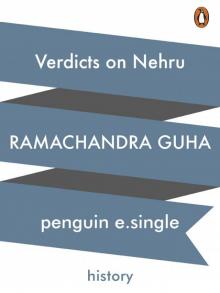 Verdicts on Nehru
Verdicts on Nehru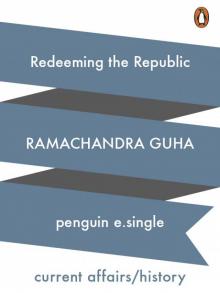 Redeeming the Republic
Redeeming the Republic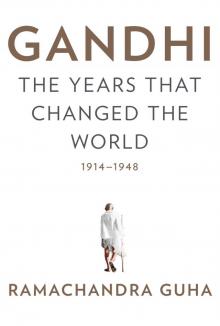 Gandhi
Gandhi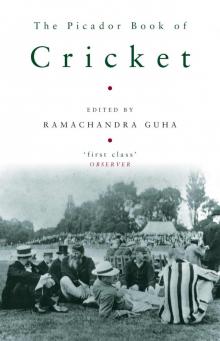 The Picador Book of Cricket
The Picador Book of Cricket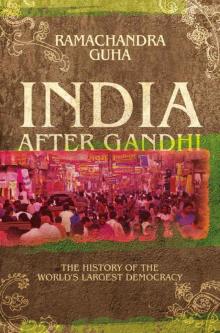 India After Gandhi
India After Gandhi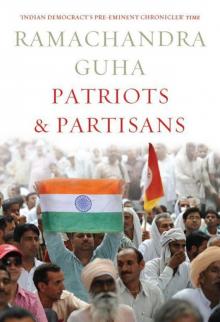 Patriots and Partisans: From Nehru to Hindutva and Beyond
Patriots and Partisans: From Nehru to Hindutva and Beyond